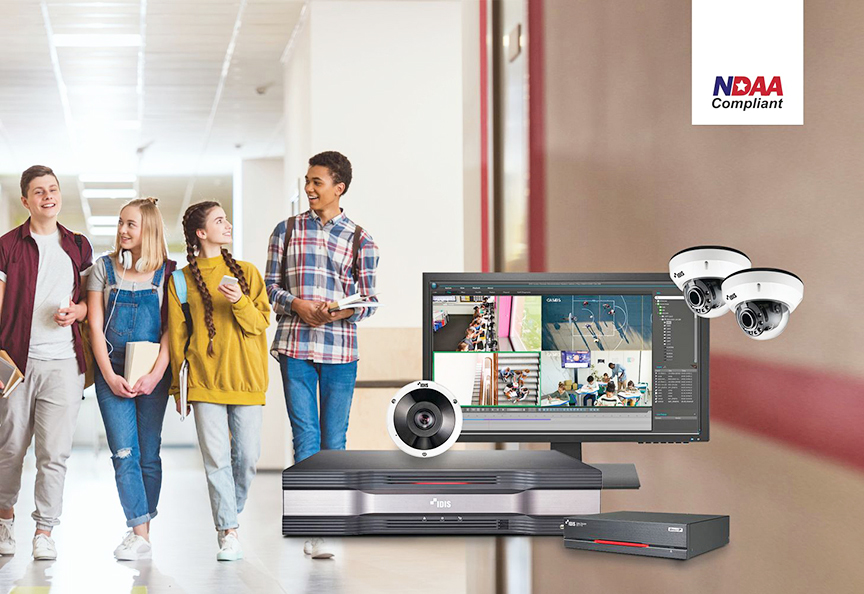IDIS remains committed to educating and supporting systems integrators and end-users on the importance of NDAA-compliance
Increasing incidents of school violence are catalyzing school security teams to implement new, more innovative security technologies and solutions to elevate their security posture. The timing could not be better, because many legacy school surveillance systems are quickly becoming a costly liability due to non-compliance, and thousands of K-12 schools may not even realize it.
Many school districts need more awareness of the full implications and details of the John S. McCain National Defense Authorization Act (NDAA 2019) that went into effect in August 2020 and how it can impact existing and future investment in the form of federal loans and funding. Continued use of banned products or their components leaves schools at risk for cyberattacks; the cyber vulnerabilities of many banned products mean they can be used by bad actors to view live or access recorded footage. The time is now for schools and universities to act and upgrade their video surveillance infrastructure to meet NDAA requirements and standards.

For school security planners not familiar with the need for compliance, the ban included not only the ‘name brand’ products from these companies but also all their OEM brands, in essence, companies that out sourced their manufacturing to these Chinese firms. The regulation also went further to prohibit federal agencies or federal loan recipients from working with integrators and their subcontractors that market, sell, or install unlawful surveillance equipment.
This means unless schools have upgraded cameras and other surveillance and associated hardware recently, chances are they aren’t NDAA-compliant.
“From speaking to end-users and integrators at recent tradeshows and working with our partners, we’ve uncovered several reasons for the lack of understanding, particularly across the K-12 sector,” noted Jason Burrows, Sales Director, IDIS America, “Spotting non-compliant equipment is often difficult and many schools have well-functioning albeit non-compliant surveillance systems. It’s not until cameras need replacing or entire systems need an upgrade that security managers and associated stakeholders conduct due diligence.”

“In addition, schools often use local systems integrators that aren’t involved in corporate or large scale federal projects where NDAA compliance is non-negotiable,” Burrows added, “As a result, many integrators aren’t yet familiar with the finer details of the NDAA. And they may not be aware that the NDAA extends to their subcontractors or that Section 889 not only applies to government facilities, but to any federally funded organization, and that includes a significant number of schools and universities.”
As a result, IDIS America is leading the charge in educating and supporting systems integrators and end-users on the importance of NDAA compliance and implementing a multi-layered approach that balances a safe learning environment with security measures, and the cybersecurity of their video systems. Upgrading to the latest video surveillance solutions that now come with AI functionality not only strengthens security and safety, but it can also make busy school security teams and teaching staff more efficient. The IDIS America team will be exhibiting at several K-12 security events during the second half of 2023, as well as providing educational blogs and articles, and launching social media campaigns.
“Non-compliance with NDAA regulations, as well as the more recent Federal Communications Commission (FCC) Secure Equipment Act of 2021 for surveillance cameras and recording equipment, can have some serious consequences,” cautioned Burrows, “It’s important for schools to take NDAA compliance seriously and ensure that their systems are secure, reliable, and in line with current regulations. IDIS is here to help them every step of the way.”
![]()